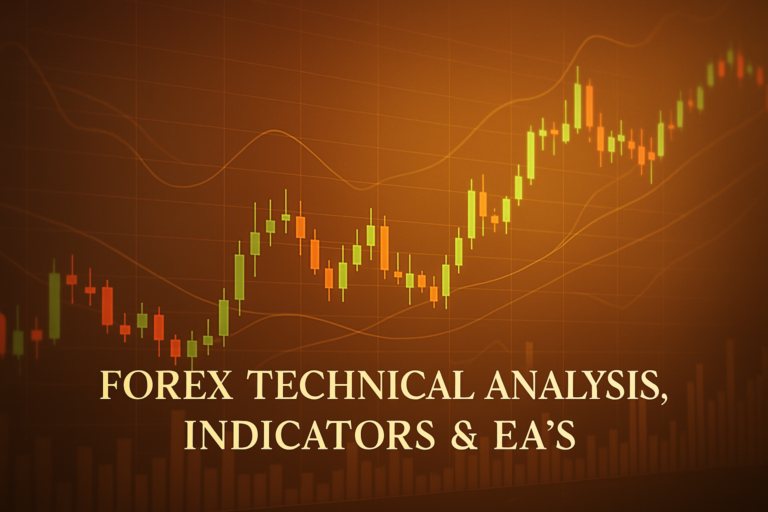
The Incorrect Margin Calculation can significantly impact your trading results. Always verify your calculations to ensure a smoother trading experience.
Have you ever felt confused while trading Forex? You’re not alone. Many traders, from beginners to seasoned professionals, often face the problem of Incorrect Margin Calculation. This issue can make trading feel like a maze with no exit. It’s crucial to understand this challenge because it can lead to unexpected losses or missed opportunities.
The world of Forex is fast-paced and complex. Many traders struggle with margin calculations, which can lead to mistakes. A simple miscalculation can change the entire outcome of a trade. By learning about this problem, you can protect yourself and improve your trading strategy. Understanding how to handle Incorrect Margin Calculation is vital for success in the Forex market.
Understanding the Problem
So, what exactly is Incorrect Margin Calculation? In Forex, margin is the amount of money you need to open a position. If this calculation is wrong, it can lead to severe consequences. For example, if you think you need $1,000 to open a trade but the broker requires $1,500, you may find yourself in a position you can’t afford.
Incorrect Margin Calculation often occurs due to technical glitches or misunderstandings of margin requirements. Let’s say you want to buy a currency pair, but you mistakenly calculate the amount needed. You might think you can use leverage to boost your potential profit, but if your margin is calculated incorrectly, you could end up losing more than you planned. For instance, during a volatile market, a trader might expect a margin requirement of 2%, but it suddenly spikes to 10%. This is a classic example of Incorrect Margin Calculation.
Solutions for Incorrect Margin Calculation
Now that we understand the problem, how can we tackle it? Here are some solutions to resolve or mitigate Incorrect Margin Calculation:
Step-by-Step Solutions
- Double-Check Margin Requirements: Always verify the margin requirements with your broker before placing a trade.
- Use a Margin Calculator: There are many online tools available that can help you calculate the required margin accurately.
- Understand Leverage: Make sure you know how leverage works and how it affects your margin. Less leverage means lower risk.
Best Practices for Future Trades
- Stay Informed: Regularly check for updates from your broker about margin requirements.
- Set Alerts: Use trading platforms that allow you to set alerts for margin changes in volatile markets.
- Practice Risk Management: Always leave extra funds in your trading account to cover unexpected margin calls.
Pro Tips & Warnings
For advanced traders, remember that market conditions can change rapidly. Always be prepared for unexpected spikes in margin requirements. If you’re trading during news releases or economic events, the risk of Incorrect Margin Calculation can increase significantly. Monitor your positions closely.
Frequently Asked Questions
How do I detect this issue in real-time?
To detect Incorrect Margin Calculation in real-time, keep an eye on your trading platform. Most platforms will show your available margin and required margin in the account overview. If you notice a sudden change, double-check your calculations and the broker’s requirements.
Can brokers legally do this?
Yes, brokers have the right to change margin requirements based on market conditions. However, they should inform traders in advance. Always read the fine print in your broker’s terms and conditions.
What tools can I use to prevent this?
Using a margin calculator tool can significantly reduce the chances of Incorrect Margin Calculation. Look for trading platforms that offer this feature, or find reputable online margin calculators.
Is this problem more common in specific market conditions?
Yes, Incorrect Margin Calculation is more common during times of high volatility, such as economic news releases or geopolitical events. During these times, margin requirements may change rapidly, so be cautious.
Conclusion
In summary, Incorrect Margin Calculation is a common issue in Forex trading. By understanding this problem and implementing the solutions we’ve discussed, you can manage your trading risks better. Always stay informed and double-check your calculations to improve your trading strategies.
Remember, knowledge is power. Stay engaged with the Forex market, and don’t let Incorrect Margin Calculation hold you back from success!
Recommended Next Steps
To further understand Incorrect Margin Calculation, consider these steps:
- Read articles and guides on margin trading.
- Practice using margin calculators before live trading.
- Join Forex trading forums to share experiences and solutions.
For more insights into Forex trading, check out Investopedia and Forex.com.
Expand Your Knowledge
- 📌 Forex Trading Learning Road Map
- 📌 Forex Trading Course with no Fees
- 📌 Forex Trading Issues, Problems, and Solutions
- 📌 Forex Daily Forecast & Live Updates
- 📌 Forex Fundamental & News Analysis: Tomorrow’s Market Movers & Trade Opportunities
- 📌 Forex Education Hub: Learn & Profit
- 📌 Forex Technical Analysis, Indicators & EA’s
Start Trading Today
Ready to take your forex trading to the next level? Open an account with Exness, one of the most trusted platforms in the industry. 👉 Sign Up Now and start trading with confidence!
Exness stands out with ultra-low spreads for mini traders, instant withdrawals, and zero spread accounts for pro traders. Trusted since 2008, Exness offers lightning-fast execution, no hidden fees, and a secure, transparent trading environment—giving you the edge you need to succeed. 🚀 Join now and trade smarter!
Watch this helpful video to better understand Incorrect Margin Calculation:
Note: The video above is embedded from YouTube and is the property of its original creator. We do not own or take responsibility for the content or opinions expressed in the video.
In this video tutorial on fundamental concepts of forex trading, the focus is on understanding margins and how to calculate margin requirements for trades. To begin with, the concept of margin is clarified; it refers to the amount of equity that a trader puts aside from their deposit when opening a trade position. This is not an additional fee but rather a portion of the trader’s own funds that is set aside for the trade. When no trades are open, the account balance, equity, and free margin will all equal the initial deposit amount. The tutorial emphasizes that traders need to know how to calculate the margin requirement for their trades, which is crucial for effective trading. The formula for calculating margin is introduced: the margin requirement equals the contract size multiplied by the lot size and the open price, divided by the account’s leverage. The video provides a practical example to illustrate this formula, showing how to calculate margin for a trade position involving one standard lot of Australian dollars.
As the tutorial progresses, it delves into the factors that influence margin requirements: lot size and leverage. It explains that the margin requirement increases with larger lot sizes, meaning that bigger trades require more margin. Conversely, margin requirements decrease with higher leverage, which allows traders to control larger positions with a smaller amount of their own capital. The video provides examples to demonstrate these principles. In one case, a trader opens a position with a leverage of 100:1 and calculates a specific margin requirement. In another scenario, increasing the lot size from one standard lot to ten significantly raises the margin requirement. Conversely, maintaining the same lot size but increasing leverage to 400:1 greatly reduces the margin required for the trade. This insight highlights the trade-off between risk and margin when choosing leverage. The video also hints that the next part will cover the margin call policy, which is essential for managing risk in forex trading. Overall, understanding margin and its calculations is vital for anyone looking to trade successfully in the forex market.





